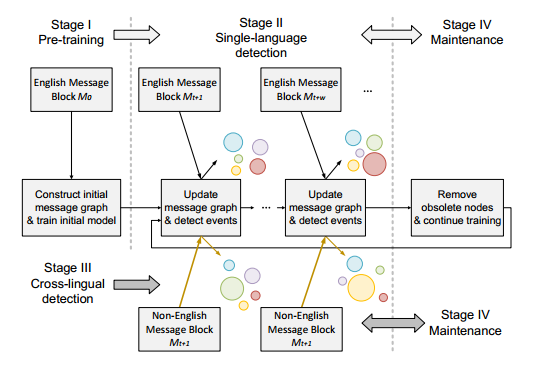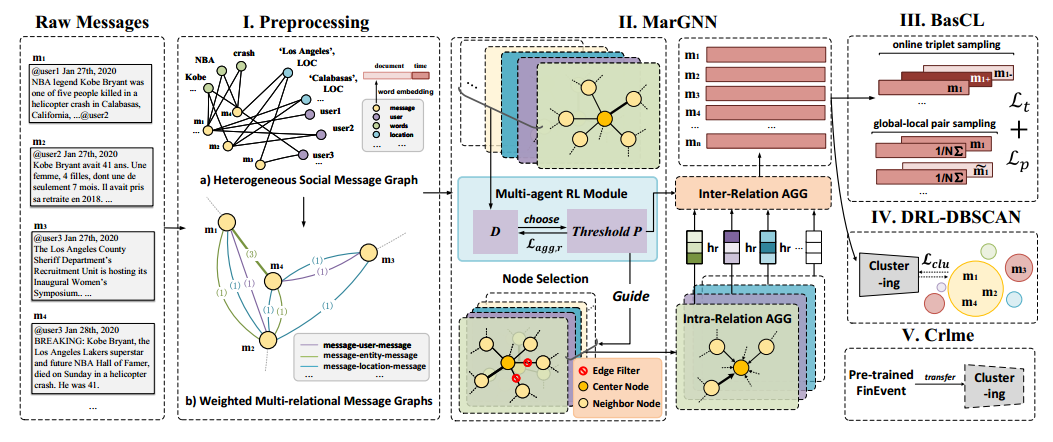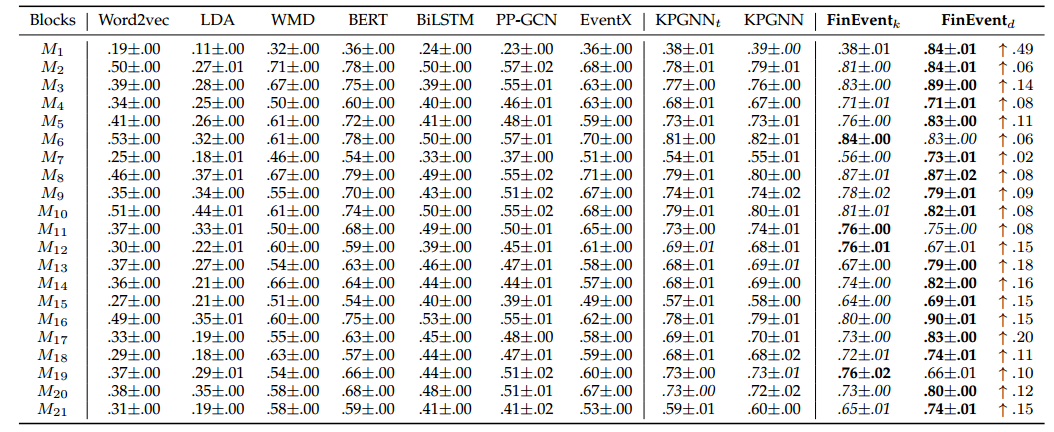Reinforced, Incremental and Cross-lingual Event Detection From Social Messages
IEEE TPAMI 2022
TL;DR We propose a new social event detection architecture, FinEvent, and a strongly weighted multi graph neural network framework, using a density space clustering model based on deep reinforcement learning to detect the optimal minimum sample size and optimal minimum distance. At the same time, we have also implemented incremental social message representation learning based on knowledge preservation, and implemented cross language transfer social event detection.
Abstract This paper proposes a new social event detection architecture, FinEvent. Model social messages as heterogeneous graphs and use an enhanced weighted multi graph neural network framework to learn social message embedding. In response to the long tail problem in social event detection, a balanced sampling strategy guided comparative learning mechanism and a density space clustering model based on deep reinforcement learning were adopted. The experimental results show that FinEvent has significant performance improvement in offline, online, and cross language social event detection tasks.

Incremental life-cycle and cross-lingual transferring mechanisms in FinEvent architecture The above figure shows the incremental lifecycle and cross language transmission mechanism in the FinEvent architecture. FinEvent performs social event detection in an incremental life-cycle mechanism. The design of FinEvent architecture aims at being consistent with the streaming nature of social messages and real situations in event detection. Concretely, we require a flexible architecture to i). deal with the streaming nature of social messages in an online manner; ii). continuously acquire, preserve and extend the message semantics; iii). handle the actual problems, especially the cross-lingual event detection task. In addition, FinEvent is also capable of realizing cross-lingual transfer.

FinEvent architecture FinEvent can realize offline, online, and cross-lingual social event detection by utilizing both social messages representation learning framework MarGNN, cross-lingual social message representation learning method Crlme, and social event clustering detection model DRLDBSCAN. The above figure shows the proposed framework FinEvent with five important modules. For the original social messages, we first convert them into a weighted multi-relational graph. Then we use multi-agent reinforcement learning to select neighbors for different relations, and obtain the aggregation of all messages through the weighted multirelational graph neural network . In order to balance sampling and cope with incremental detection scenarios, a strategy-based contrast learning mechanism is used to train the GNN. Finally, we use the DBSCAN model guided by deep reinforcement learning for event clustering parameter debugging.
Experiments We conducted experiments on a Twitter dataset collected by a Twitter API. The baselines are: Word2vec, LDA, WMD, BERT, BiLSTM, PP-GCN, EventX. We first compare FinEvent to different baselines including offline as well as incremental social event detection models. The specific results are as follows.
Offline evaluation:

Incremental evaluation:

Multi-agent reinforcement learning process:

Deep reinforcement learning process:

Conclusion This article introduces a social event detection architecture based on streaming social messages, FinEvent, and proposes a multi-agent reinforcement learning guided multi graph neural network framework, MarGNN, and a density space clustering model based on deep reinforcement learning, DRL-DBSCAN, to improve the performance of FinEvent. The experimental results indicate that FinEvent has achieved significant and consistent improvements in offline, online, and cross language social event detection tasks. In the future, researchers plan to extend multi-agent RL guided GNN to other graph data representations and their application fields.